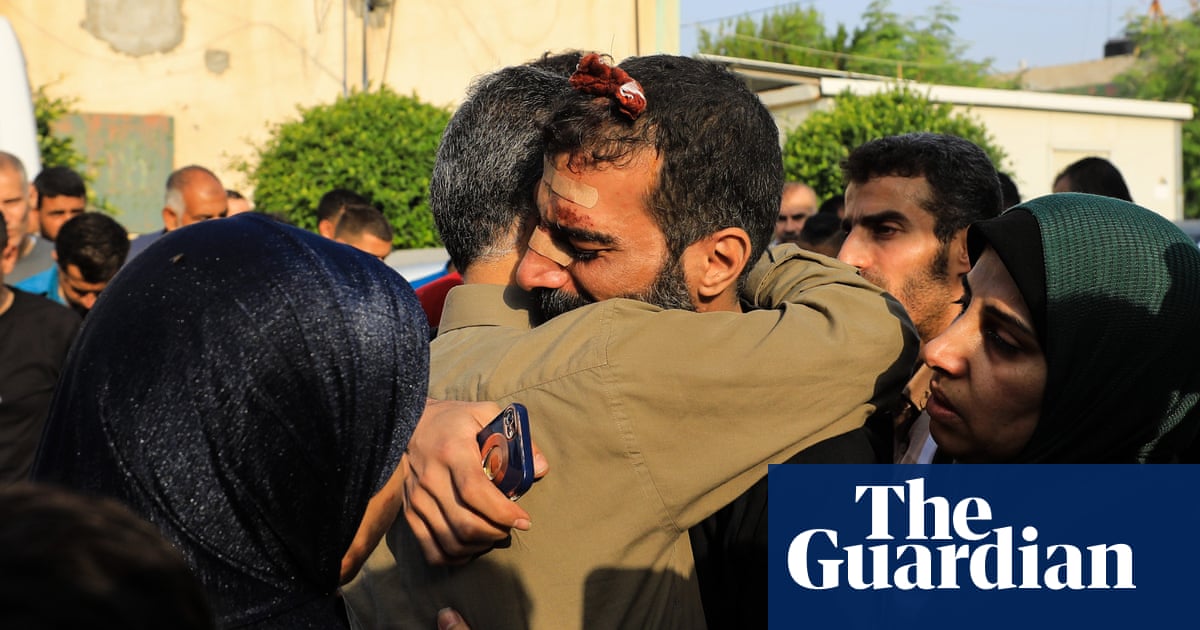
The 20th anniversary of the Good Friday Agreement provided a good opportunity for some of the senior politicians who were involved in reaching this agreement to assemble in Belfast, and reflect on the difficulties involved in achieving it, and on the peace deal’s wider implications for Northern Ireland and far beyond.
A number of participants in the Belfast conference, such as former US president Bill Clinton, former British prime minister Tony Blair and US senator George Mitchell, were also at the heart of some major efforts to bring an end to the Israeli–Palestinian conflict. The obvious question is: Why did their peace-making efforts succeed with one protracted, bloody and complex conflict, but not with the other? After all, both peace processes took place in close proximity timewise, and had much in common in terms of the issues that kept them apart and the third party mediators involved. Yet the Good Friday Agreement, despite its imperfections and occasional setbacks, managed to ensure stability and end almost all the violence; while a quarter of a century after the Oslo Accords, such a scenario remains something that Israelis and Palestinians can only dream of.
Senator George Mitchell, who chaired the talks that led to this momentous peace deal, was also less successful, though through no fault of his own, in his efforts to mediate between the Israelis and Palestinians nearly a decade ago. When asked to draw parallels between those negotiations and the ones in Northern Ireland, he quipped that despite quite a number of similarities, six months of negotiating in the Middle East made the Irish protagonists with whom he negotiated for five years and perceived as extremely intransigent, “look like patsies.” No surprise that he eventually handed in his resignation to President Obama as his special peace envoy, and since then no one has done any better in bringing peace to the Holy Land.
Indeed, the lack of flexible and visionary leadership is an obvious and major obstacle in advancing the cause of peace between the Israelis and the Palestinians. But this provides us only with a partial answer. There are unmistakable parallels between the two conflicts. Both revolve around a clash of religious and national identities. There is also a strong economic element in both cases. Nationalism and religious zeal can at times be an outlet for those who are humiliated by foreign occupation and an inability to sustain their families among other hardships. Such deprivations lead to a loss of self-esteem, especially among young men, and this in turn can often lead to violence. However, despite the economic upturn in Northern Ireland since the Good Friday Agreement, it would be wrong to assume that economic peace is a magic formula for resolving the conflict. No peace agreement can be reached and sustained unless the political, civil and human rights of everyone involved in the conflict are addressed and taken care of justly and fairly. Improving living conditions and ensuring that the next generation enjoys a more normal and prosperous upbringing are paramount, and are an incentive for the necessary and reasonable compromises on both sides, but they are no substitute for respecting and recognising human rights.
The Irish question is far from being resolved and the ongoing political impasse on the issue of power sharing in Stormont remains a real cause for concern. However, the positives of Good Friday can serve to a large extent as a model and source of inspiration for the Israelis and Palestinians
Yossi Mekelberg
And compromise is a key word that the dignitaries at this week’s Belfast conference were emphasising as a crucial element in reaching a peace deal. Former Irish prime minister Bertie Ahern told the audience: “The art of politics is compromise, you can’t make progress without compromise. Compromise is when people come together and say, ‘Listen, this is the dilemma, this is the difficulty, this is what is unsaleable to my people’ and let us try to find a way out.” In Ireland the peace interlocutors managed to master the art of compromise, whereas in the Middle East at the most crucial moments the Israeli and Palestinian leaders failed to do so, and in return they failed their own people.
One should not be deceived by the similarities between the two conflicts, as there are also aspects that make peace between the Israelis and the Palestinians more difficult, though by no means unachievable. For one, the geopolitics is more complex. Ireland is an island, and its borders are remote from those of other countries and centers of political turmoil. At the time of the Good Friday Agreement, Europe was at the height of its post-Cold War euphoria, and nearly everyone wanted to be part of it. Israel and Palestine are in the midst of a regional cauldron. At no point in the history of the conflict has that region enjoyed any prolonged period of stability. Moreover, unlike the Irish case, which was a single isolated conflict, Israel has been embroiled in a series of confrontations with other regional forces, some directly related to the Palestinian issue, some having developed their own rationale, however undesirable. Israel’s peacemaking with Arab countries such as Egypt and Jordan has not advanced any final-status agreement between the Israelis and the Palestinians. Without belittling the immense challenges that were involved in bringing peace to Northern Ireland, the magnitude of issues such as Jerusalem, with its immense symbolism; of security for all; of the plight of at least five million Palestinian refugees; and of the constant expansion of Jewish settlements, requires even more imagination, courage and proactive international involvement of a kind that so far has been sadly lacking.
One lesson from the Good Friday Agreement that has been partially, albeit insufficiently, learnt in the Israeli–Palestinian peace process is the importance of an active civil society and grassroots involvement to support the leadership in its search for peace. It is widely agreed that leadership without grassroots support, and vice-versa, are not conducive for peace. One area where Good Friday succeeded while Oslo failed is in implementing confidence-building measures and gestures that build trust. No more so than, for instance, the release of prisoners and the decommissioning of weapons that, difficult and emotive though it was, paved the way for the support of both the nationalist and unionist communities in Northern Ireland.
The Irish question is far from being resolved and the ongoing political impasse on the issue of power sharing in Stormont remains a real cause for concern. However, the positives of Good Friday can serve to a large extent as a model and source of inspiration for the Israelis and Palestinians. It would require, however, three things — leadership, a public prepared to abandon its apathy, and an international community with a renewed interest and belief in facilitating a peace agreement. Sadly, the prospects for this are less than promising.
Yossi Mekelberg is professor of international relations at Regent’s University London, where he is head of the International Relations and Social Sciences Program. He is also an associate fellow of the MENA Program at Chatham House. He is a regular contributor to the international written and electronic media. Twitter: @YMekelberg












